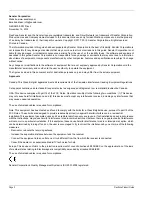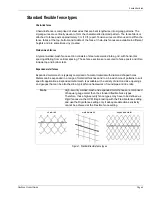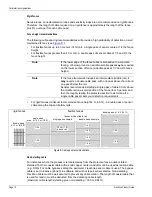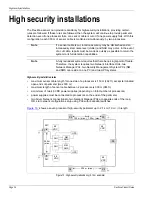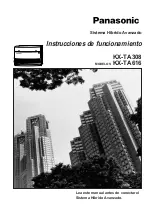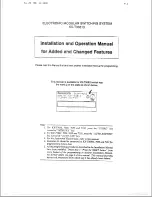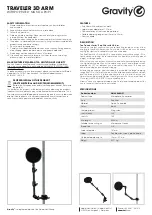
Fence structures
Page 10
FlexZone Product Guide
Rigid fence types
Palisade fences
A typical palisade fence panel consists of metal pales fastened onto horizontal rails. These fence
sections are secured to fence posts which are securely anchored to, or into, the ground.
Climb-over deterrent hardware
Barbed wire
Senstar recommends using armored sensor cable on barbed wire. Armored cable is comprised of
FlexZone sensor cable inside flexible metal conduit. To protect both the fence and the barbed
wire, use armored cable on the barbed wire, and use sensor cable on the fence fabric. Install
armored cable on both sides of each outrigger and along the top of the fence (see
).
These configurations allow both sensor cables to be properly calibrated for the specific mounting
surface.
Barbed wire outriggers must be secure to prevent movement due to environmental conditions.
Install bracing wires between the outrigger supports to prevent the barbed wires from spreading
apart. Each barbed wire strand should be taut and tightly secured at each support. Any extension
arms or outriggers attached to post tops should have a tight press-fit or be spot-welded. Remove
or fasten any loose or rattling equipment.
Razor ribbon
Senstar recommends using armored cable on razor ribbon. The razor ribbon must be secured so
that it does not move in the wind. Use tensioning wires to secure the coil and to prevent the razor
ribbon from pulling apart if it is cut (see
Note
Rigid fence types do not conduct vibrations as well as flexible fence
types due to their materials and construction. FlexZone provides an
increased sensitivity setting for use with rigid fences. Senstar
recommends installing the FlexZone sensor on a limited length section
of the rigid fence to test and verify that the detection sensitivity meets
the security requirements before installing a full length perimeter.
Figure 2: Rigid fence (palisade)


